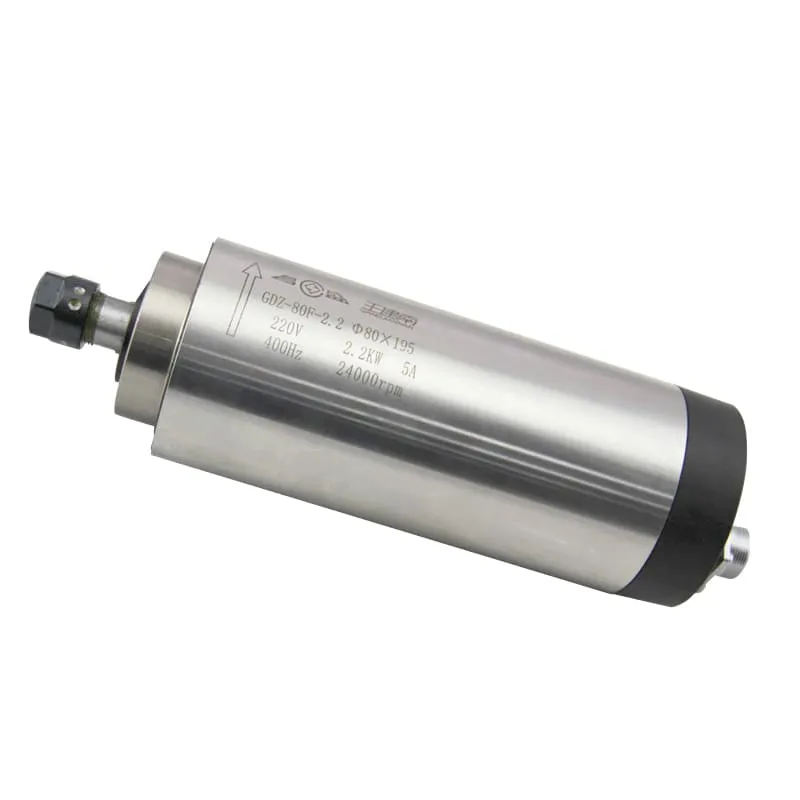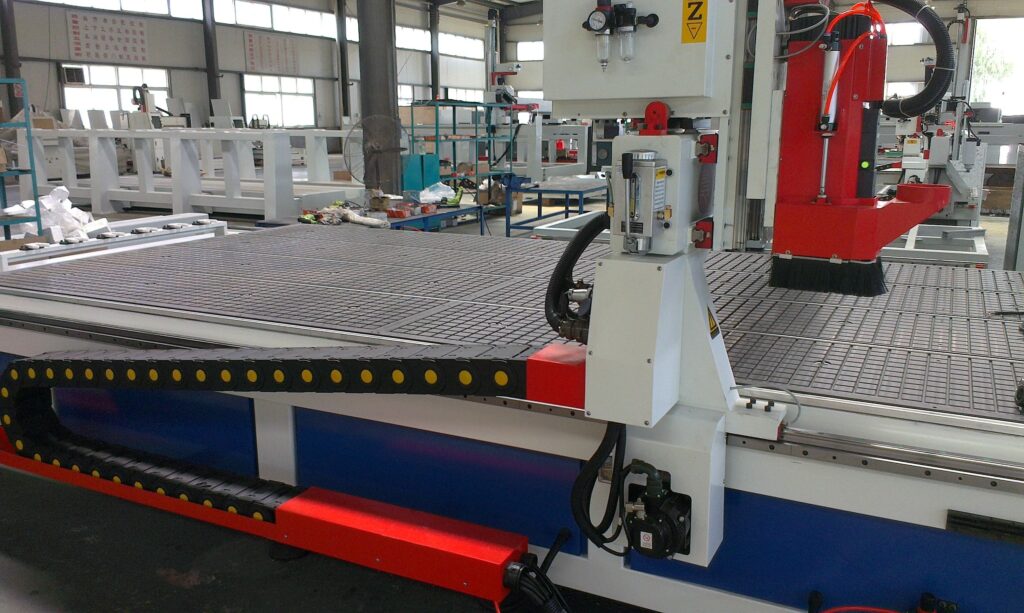Are CNC Machines Hard to Learn?

A typical CNC machine with a high-speed spindleCNC (Computer Numerical Control) machines have revolutionized manufacturing, offering precision, efficiency, and versatility. But for many, the prospect of learning to operate these complex machines can seem daunting. In this comprehensive guide, we’ll explore the learning curve associated with CNC machines, break down the key skills required, and provide insights on how to master this valuable technology.
The Basics of CNC Machining
Before diving into the learning process, it’s essential to understand what CNC machining entails. CNC machining is a manufacturing process where pre-programmed computer software dictates the movement of factory tools and machinery. This technology can control a wide range of complex machinery, from grinders and lathes to mills and routers.
Is CNC Really That Difficult to Learn?
The short answer is: it depends. Like any specialized skill, learning CNC machining requires dedication, patience, and practice. However, it’s not insurmountable. With the right approach and resources, anyone with a genuine interest can become proficient in CNC machining.
Key Components of CNC Learning
1. Understanding CAD/CAM Software
Computer-Aided Design (CAD) and Computer-Aided Manufacturing (CAM) software are the cornerstones of CNC machining. These programs allow you to design parts and generate the code that controls the CNC machine.Learning Tip: Start with user-friendly CAD software like Fusion 360 or SolidWorks, which offer tutorials and community support.
2. Mastering G-code Programming
G-code is the language that CNC machines understand. It tells the machine what to do and how to do it.Learning Tip: Begin with simple programs and gradually increase complexity. Online simulators can help you practice without risking actual machine operation.
3. Familiarizing Yourself with Machine Operation
Each CNC machine has its quirks and characteristics. Understanding how to set up, operate, and maintain these machines is crucial.Learning Tip: If possible, start with a smaller, less complex machine like a CNC router with a basic spindle. This can help you grasp the fundamentals before moving on to more advanced machines.
4. Developing Material Knowledge
Different materials require different cutting speeds, feed rates, and tool selections. Understanding these nuances is key to successful CNC machining.Learning Tip: Experiment with various materials, starting with easier-to-machine options like soft woods or plastics before progressing to metals.
The Learning Curve: What to Expect
- Initial Challenges: The first few weeks can be overwhelming as you grapple with new terminology, software interfaces, and machine operations.
- Gradual Progress: With consistent practice, you’ll start to see improvements in your understanding and capabilities within a few months.
- Proficiency: Depending on your dedication and the complexity of the machines you’re working with, achieving proficiency can take anywhere from 6 months to 2 years.
- Continuous Learning: CNC technology is always evolving. Even experienced machinists continue to learn and adapt to new techniques and technologies.
Tips for Accelerating Your CNC Learning
- Take Structured Courses: Many technical schools and community colleges offer CNC machining courses. These provide a solid foundation and hands-on experience.
- Utilize Online Resources: Websites, YouTube tutorials, and online forums can be invaluable sources of information and troubleshooting advice.
- Practice, Practice, Practice: The more time you spend working with CNC machines, the faster you’ll improve. Consider getting a small desktop CNC machine for home practice.
- Learn from Experienced Machinists: If possible, seek mentorship or apprenticeship opportunities. Learning from seasoned professionals can significantly accelerate your progress.
- Stay Updated: Follow industry publications and attend trade shows to stay abreast of the latest developments in CNC technology.
Overcoming Common Challenges
Challenge 1: Software Complexity
Many beginners find CAD/CAM software intimidating.Solution: Break down your learning into small, manageable chunks. Focus on mastering one feature at a time rather than trying to learn everything at once.
Challenge 2: G-code Confusion
G-code can seem like a foreign language at first.Solution: Start with basic commands and gradually build your knowledge. Use online G-code reference guides and practice writing simple programs before attempting complex ones.
Challenge 3: Machine Setup and Calibration
Proper machine setup is crucial for accurate results.Solution: Create a checklist for machine setup and calibration. Practice these steps regularly until they become second nature. Understanding your machine’s components, like the spindle motor, is crucial for proper setup and maintenance.
Challenge 4: Tool Selection and Management
Choosing the right tools for different materials and operations can be overwhelming.Solution: Start with a basic set of versatile tools and expand your collection as you gain experience. Keep a log of which tools work best for different materials and operations.
The Role of Spindles in CNC Learning
One crucial component of CNC machines that learners should pay special attention to is the spindle. The spindle is essentially the “heart” of the CNC machine, responsible for holding and rotating the cutting tool.Understanding spindle characteristics such as speed, power, and cooling methods is essential for achieving optimal machining results. For instance, a high-speed air-cooled spindle might be ideal for working with softer materials, while a more powerful water-cooled spindle could be necessary for heavy-duty metal machining.
FAQs About Learning CNC Machining
How long does it take to learn CNC machining? The learning time varies depending on the individual and the complexity of the machines. Basic proficiency can be achieved in 6-12 months, while mastery may take several years.Do I need strong math skills to learn CNC? While basic math skills are helpful, modern CAD/CAM software handles much of the complex calculations. However, understanding geometric principles and spatial relationships is important.Is it possible to learn CNC machining on my own? Yes, it’s possible to learn the basics through online resources and practice. However, formal training or mentorship can greatly accelerate your learning and help you avoid common pitfalls.What’s the most challenging aspect of learning CNC? Many find G-code programming and troubleshooting machine issues to be the most challenging aspects. These skills improve significantly with practice and experience.Are there any prerequisites for learning CNC machining? While not strictly necessary, having a background in mechanical engineering, drafting, or general machining can be helpful. Familiarity with computers and basic geometry is also beneficial.How expensive is it to get started with CNC machining? Entry-level desktop CNC machines can be relatively affordable (under $1000), but industrial-grade machines can cost tens of thousands of dollars. Many learners start with software simulations or take courses that provide access to machines.
Conclusion
Learning CNC machining is a journey that requires dedication, patience, and a willingness to continuously learn and adapt. While it may seem daunting at first, the skills you develop can open up exciting career opportunities and enable you to create complex, precision parts that would be impossible with manual machining.Remember, every expert CNC machinist was once a beginner. With persistence and the right resources, you can master this valuable skill. Whether you’re looking to enhance your career prospects, start a business, or simply explore a fascinating aspect of modern manufacturing, learning CNC machining is a rewarding endeavor.As you embark on your CNC learning journey, don’t hesitate to explore resources like SpindleMotorShop.com for information on crucial components like spindles and motors. Understanding these elements will contribute significantly to your overall mastery of CNC technology.Happy machining!Key Takeaways:
- CNC machining is learnable with dedication and the right resources
- Understanding CAD/CAM software, G-code, and machine operation are crucial skills
- The learning curve varies, but basic proficiency can be achieved in 6-12 months
- Continuous learning and practice are key to mastering CNC machining
- Familiarizing yourself with machine components, especially spindles, is important for success
- Online resources, structured courses, and mentorship can accelerate your learning process

